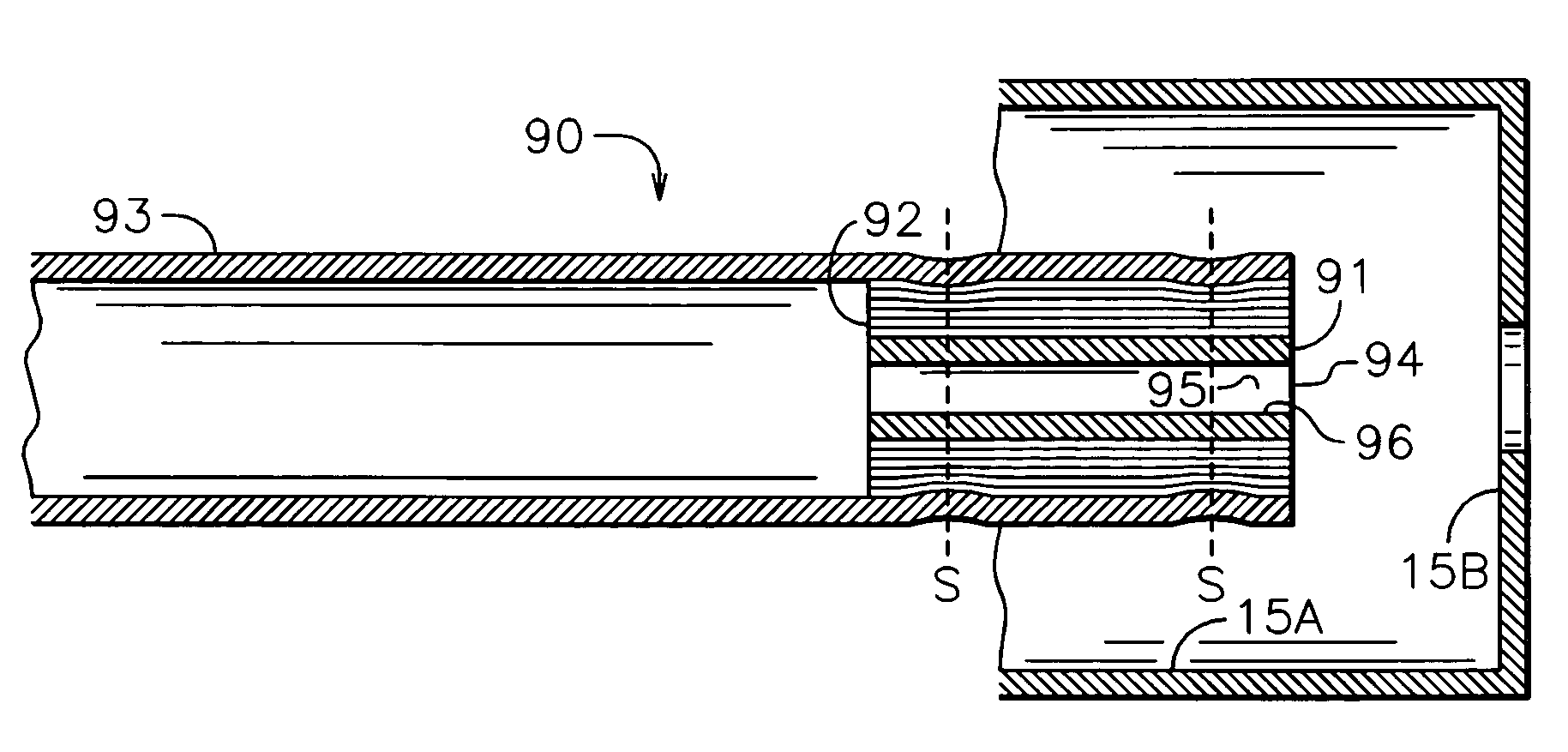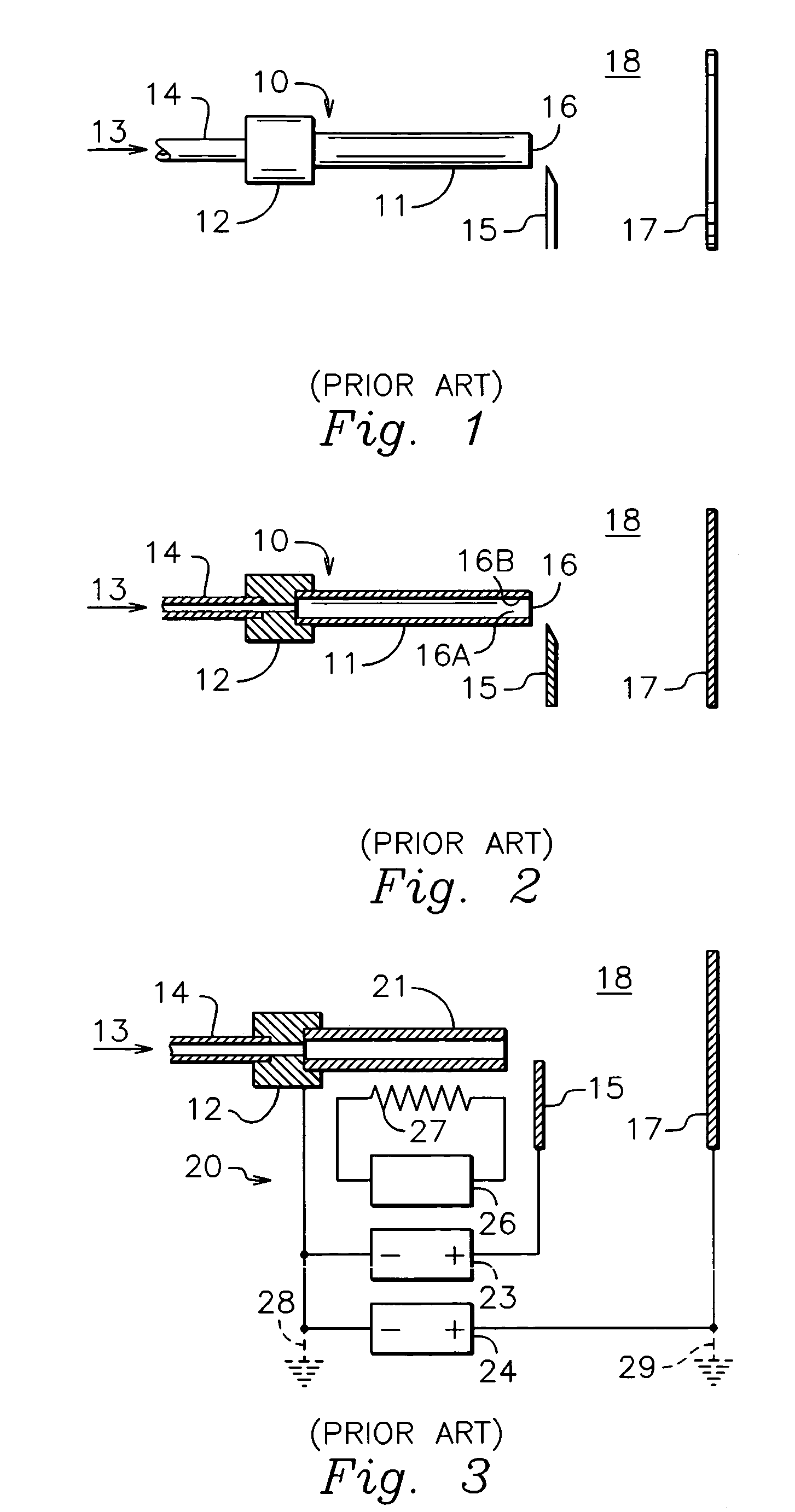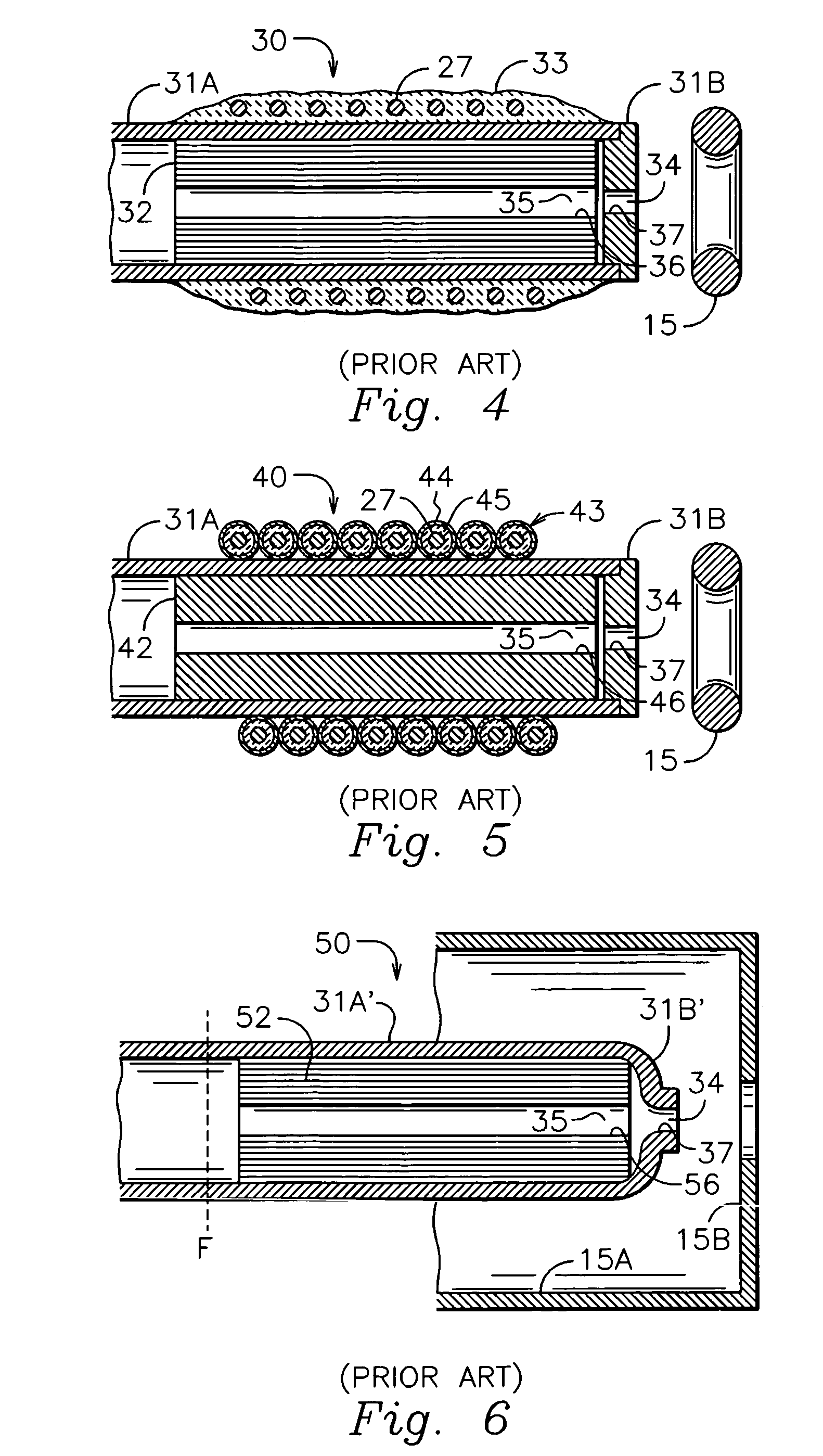Industrial hollow cathode
a hollow cathode and hollow cathode technology, applied in the field of hollow cathodes, can solve the problems of limiting the lifetime of hollow cathodes, the need to generate an electrical breakdown of ionizable working gas, and the tubular cathode of delcroix, etc., and achieves the effect of simple fabrication and us
- Summary
- Abstract
- Description
- Claims
- Application Information
AI Technical Summary
Benefits of technology
Problems solved by technology
Method used
Image
Examples
Embodiment Construction
[0078]Referring to FIG. 11, there is shown an embodiment of the present invention. Hollow cathode 90 comprises refractory-metal first tube 91, which is surrounded by plurality of refractory-metal radiation shields 92, which in turn is surrounded by refractory-metal second tube 93. A radiation shield is defined herein as a single layer that circumferentially encloses the hollow-cathode tube. As described in the prior art, this definition is consistent with radiation heat transfer from layer-to-layer being much greater than conductive heat transfer along a spiral winding for the dimensions, temperatures, and foil used. A plurality of shields is therefore conveniently constructed as a spiral, multiple-turn winding of refractory-metal foil, or a plurality of such windings. In order to minimize the layer-to-layer contact between shields in a spiral winding, the metal foil may be textured before winding. The foil can textured by pressing it against a rough or corrugated surface, which imp...
PUM
 Login to View More
Login to View More Abstract
Description
Claims
Application Information
 Login to View More
Login to View More - R&D
- Intellectual Property
- Life Sciences
- Materials
- Tech Scout
- Unparalleled Data Quality
- Higher Quality Content
- 60% Fewer Hallucinations
Browse by: Latest US Patents, China's latest patents, Technical Efficacy Thesaurus, Application Domain, Technology Topic, Popular Technical Reports.
© 2025 PatSnap. All rights reserved.Legal|Privacy policy|Modern Slavery Act Transparency Statement|Sitemap|About US| Contact US: help@patsnap.com



